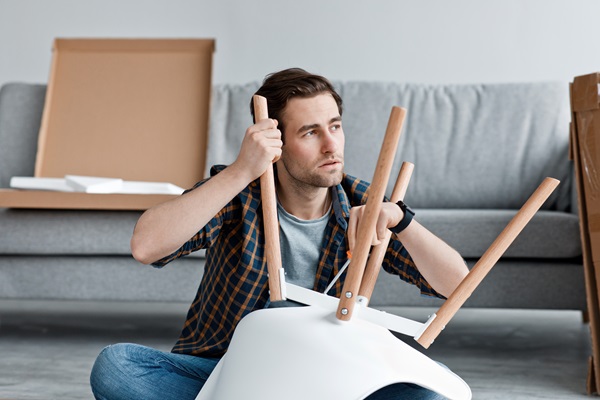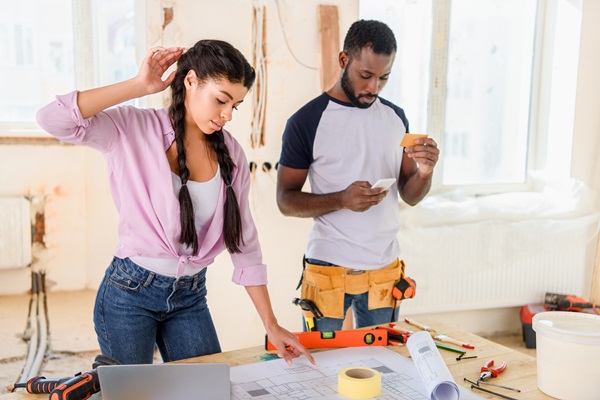Creating a harmonious and functional home environment is more than just a matter of taste; it’s about making informed design decisions that stand the test of time. Many homeowners fall into the trap of making costly home design mistakes, often influenced by fleeting trends or neglecting practicality in favor of aesthetics. This guide aims to shed light on these common errors, providing insights into how to sidestep them to achieve a balance of style, functionality, and budget. By identifying these pitfalls, you can navigate the complex world of home design with confidence, ensuring your living space is both beautiful and practical.
Contents
Overlooking Functionality

In the realm of home design, functionality should never take a back seat to aesthetics. A beautiful space loses its appeal if it doesn’t serve the needs of its occupants effectively. Many homeowners make the mistake of choosing furniture or layouts based solely on appearance, resulting in living spaces that are visually pleasing but practically inconvenient. It’s crucial to consider how each room will be used, ensuring that the layout promotes ease of movement and the furnishings support the daily activities of the household. Incorporating functional design from the start saves time, money, and frustration, ensuring that the home not only looks good but also feels right.
Ignoring Lighting Needs

Lighting plays a pivotal role in transforming the ambiance and functionality of a home, yet it’s often overlooked or mismanaged. Adequate lighting enhances the mood, accentuates interior design, and facilitates tasks. A common mistake is relying too heavily on either natural or artificial light rather than seeking a balance that adapts to different times of the day and activities. Effective lighting design involves layering light sources to create a versatile environment, integrating ambient, task, and accent lighting. Understanding the unique lighting needs of each space ensures that every room is both inviting and practical.
Choosing the Wrong Color Scheme

The colors chosen for a home’s interior can dramatically affect its overall feel and spatial perception. Homeowners often err by selecting colors that are trendy or appealing in isolation, without considering the broader context of the space. A color scheme that lacks coherence or clashes with the home’s architecture can make rooms feel disjointed or uncomfortable. It’s important to select a palette that complements the natural lighting and size of the space, creating a sense of continuity and harmony. Thoughtful consideration of color can elevate the aesthetic of a home, influencing mood and creating the desired ambiance in each room.
Neglecting Storage Solutions

Adequate storage is a cornerstone of good home design, directly impacting functionality and aesthetics. Many homeowners underestimate their storage needs, leading to cluttered and disorganized spaces that detract from the home’s overall appeal. Smart storage solutions should be integrated into the design process, tailored to the specific needs of the occupants and the layout of the home. Hidden storage options, multi-functional furniture, and built-in units can maximize space efficiency without compromising style. By thoughtfully addressing storage, you can create a tidy and orderly home environment that enhances both form and function.
Effective storage planning involves more than just adding more cabinets or shelves; it’s about creating a coherent system that supports the daily life of the home. Overlooking this aspect can result in rooms that feel cramped and chaotic, undermining the tranquility and comfort of your living space. It’s essential to consider both the quantity and quality of storage, ensuring it’s accessible, practical, and aesthetically pleasing. A well-designed storage system not only improves the usability of a space but also contributes to a cleaner, more organized aesthetic.
Over-Furnishing Rooms

The temptation to fill rooms with furniture and decor can lead to over-furnishing, a common design mistake that disrupts the balance and flow of a space. Over-furnishing makes rooms feel smaller, cluttered, and less functional. It’s important to be intentional about furniture choices, considering both the size of the space and the practical needs of those using it. Striking the right balance between furnishings and open space enhances movement, utility, and aesthetic appeal. A minimalist approach, focusing on quality over quantity, can often yield the most satisfying and spacious outcomes.
Many homeowners fall into the trap of purchasing furniture impulsively, without a clear plan, resulting in a mismatched and overcrowded space. To avoid this, create a detailed layout before buying furniture, considering the scale and function of each piece. This planning ensures that each item serves a purpose and contributes positively to the overall design. Less is more in modern home design, where the focus is on creating airy, breathable spaces that are both beautiful and livable.
Following Trends Blindly

While keeping up with design trends can provide inspiration, slavishly following them often leads to costly mistakes and a home that quickly feels dated. Trends come and go, but the foundation of your home’s design should be timeless and tailored to your personal style. The key is to blend trendy elements with classic design principles to create a space that feels both current and enduring. This approach allows for updates that refresh the look of your home without a complete overhaul, maintaining a sense of continuity and individuality.
The allure of the latest design fads can be strong, but it’s crucial to critically assess whether a trend aligns with the functionality and aesthetic of your home. Integrating trendy accents as replaceable items, like cushions, art, or curtains, can inject contemporary flair without committing to permanent or expensive changes. This strategy ensures your home evolves with your tastes and remains both stylish and practical, avoiding the pitfalls of trend-driven design decisions.
Poor Budget Management

Effective budget management is critical in home design, yet it’s a common area where many homeowners falter, leading to unnecessary financial strain. Without a clear budget, costs can quickly spiral out of control, resulting in half-finished projects or compromised quality. It’s essential to establish a realistic budget that encompasses all aspects of the design process, from materials to labor, and to stick to it diligently. Prioritizing spending according to necessity and impact can prevent financial oversights and ensure that resources are allocated efficiently, enhancing the value of the investment.
In addition to setting a budget, monitoring expenditures throughout the design process is crucial to avoid overspending. Unforeseen expenses can arise, making flexibility and contingency planning important aspects of budget management. Homeowners should be wary of cutting corners on critical elements that affect the longevity and functionality of the design, as this can lead to higher costs in the long run. Careful planning and financial oversight can mitigate the risks associated with home design projects, ensuring that the end result is both satisfying and financially sustainable.
Underestimating the Value of Professional Advice

Many homeowners believe they can navigate the complexities of home design alone, often underestimating the value of professional guidance. While DIY projects can be rewarding, certain aspects of home design require the expertise of professionals, from architects and interior designers to specialized contractors. These experts can provide insights and solutions that maximize the aesthetic and functional potential of a space, often saving money and time by avoiding common mistakes. Leveraging professional advice can also uncover opportunities to enhance the design in ways that might not have been considered, adding unique value to the home.
The reluctance to invest in professional design services can stem from a desire to reduce costs, but this can be shortsighted. Professionals bring a wealth of experience and knowledge, helping to refine ideas and translate them into practical, stylish solutions. They can also navigate complex regulatory requirements and technical challenges, ensuring the project adheres to standards and expectations. In the long run, investing in expert advice can prevent costly errors and result in a more cohesive, enjoyable, and valuable home environment.
Designing with Wisdom
In navigating the intricate journey of home design, awareness of common pitfalls is key to creating spaces that are both beautiful and functional. From prioritizing practicality to valuing professional insight, each decision shapes the lived experience of your home. By embracing thoughtful planning, budget awareness, and a balance between trends and timelessness, homeowners can avoid costly mistakes. This approach not only saves money and time but also cultivates a living environment that resonates with personal style and meets practical needs, ensuring lasting satisfaction and enjoyment.


